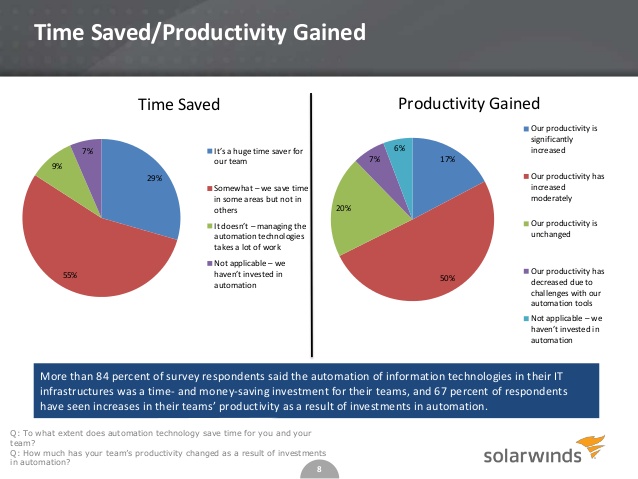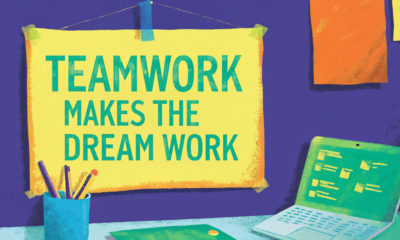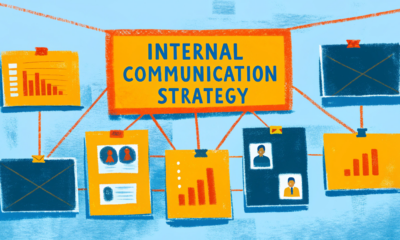Collaboration
6 Tips for Lifting the Burden of Too Many Responsibilities

Busy is the new cool. Somewhere along the line, it became a badge of honor to have as many responsibilities as possible. Stories of CEOs waking up at 4 am, working 80-hour weeks, and glorifying their struggle to succeed are everywhere. But for many, this culture can lead to burnout and unhappiness.
The pressure to take on too much responsibility at work has never been greater. Employees across industries often face the overwhelming task of juggling multiple roles and trying to keep everything running smoothly. When the weight of ‘too many responsibilities’ becomes too much to bear, the effects can spill over into both personal and professional life, resulting in stress, anxiety, and reduced productivity.
The burden of too many responsibilities can lead to sleepless nights, high levels of stress, and general unhappiness. If you feel overwhelmed by your workload and find yourself constantly rushing from one task to the next, you’re not alone. It’s not uncommon for employees to feel like they have to do it all. Fortunately, there are practical ways to manage your workload and regain control of your time. If you’re ready to refocus and cut back on unnecessary work, in this article we list some strategies to help you find balance and enjoy more of your life outside of work.
Spot the warning signs before it’s too late
Before you can start tackling an overwhelming workload, you need to recognize when it’s starting to get the better of you. Burnout doesn’t always show up with flashing red lights. Often, it creeps in gradually – missed lunches, working late more often than not, and feeling like you’re never really “off.”
You might notice that you’re more irritable than usual, or that your concentration isn’t what it used to be. Maybe tasks that once felt simple now seem impossible to complete, or you catch yourself staring blankly at your screen, unsure of what to do next. These little signs are your brain’s way of waving a red flag.
Pay attention to changes in your mood, energy levels, or sleep patterns. If the thought of another Monday fills you with dread – not because you dislike your job, but because you’re just tired – that’s a warning sign. If you’re snapping at coworkers or forgetting basic things, it might be time to stop and take a breath.
The earlier you spot these signs, the easier it is to reset before things spiral out of control. Awareness is your first step toward doing something about it.
Once you know what burnout looks like, the next step is to take control of your time, and that starts with deciding what really matters.
Make a list of priorities
If you feel overwhelmed, sometimes it’s not that you have too many tasks. It’s more a case of spending too much time on the wrong things. I’m sure you’ve found yourself spending half your day answering emails, only to have no time left for business development tasks as the end of the working day approaches. It’s a common problem when you take on too much responsibility without clear boundaries, leading to overwhelm and burnout.
To get around this, make a list of your tasks and sort them by priority — things that must be done, medium priority and optional. Try using a prioritisation matrix to rate each task based on urgency and importance. This will help you see clearly what needs your immediate attention and what can be put aside. Once you’ve got everything down on paper, you’ll probably find that the least important tasks are taking up most of your time. This is when you need to refocus and let go of the unimportant in favour of the important. You may also find that by refusing to take on certain burdens, such as minor administrative tasks, you can increase your productivity on core objectives.
PS. You can sort your priority lists in your project management tool of choice, such as Trello.

Automate as much as you can
One of the wonders of modern technology is that many tasks can be automated, so you don’t waste time on them yourself. Something as simple as going to Google Calendar and making an entry for a meeting can take just a few minutes, but it can be turned into seconds with a tool such as Calendly. Imagine how much of your time can be saved every year by automating tedious tasks such as this one.

slideshare.net
For example, for one of the Facebook pages I run, I simply sit down and create all of my posts at once and then schedule them for the weeks ahead. You can do even more by using tools such as MeetEdgar to schedule posts on several social media platforms at once.
Finally, there are excellent tools such as IFTT and Zapier. If you’ve ever wanted to automate something, there’s a big chance one of these can make it happen. For example, you can set up Zapier so that your new subscribers are added to a specific mailing list, then added to a pre-determined Google sheet and then a new Trello card created with the subscribers’ email and name. With a little bit of tinkering, you can automate anything you can think of.
Delegate tasks to others
Sometimes, the best cure for having too many responsibilities is to take something off your plate and put it on someone else’s. While it can be incredibly difficult to let go of a task that you feel is important, the amount of free time you can gain from delegation can be quite impressive.
Founders and CEOs often have an issue with delegation because they get stuck in an infinite loop. First, they think they’re the only ones who can take care of a task and no one else can handle it. Second, even if they did find someone to delegate it to, the amount of time spent teaching this task would be too much for it to make sense.
In fact, delegation can free up significant portions of your time. You can simply offload some of your responsibilities to your colleagues if they have the time. Alternatively, you can outsource the task to someone, such as an intern or a fresh college graduate.
Using an outsourcing calculator can even help you determine the financial benefits of delegating certain tasks.
One thing that’s become quite popular lately is hiring virtual assistants. These workers can help you out with more repetitive, administrative tasks such as responding to emails, booking meetings, entering data, and much more. If it can be taught, a virtual assistant can do it for you.
Let your boss delegate and prioritize
You’ve probably been there. Your boss comes up and assigns the daily/weekly/quarterly tasks and you happily oblige to take on another task in your already busy schedule. You know you probably can’t handle it and that something will have to suffer, either in poor quality of work or missed deadlines. However, you decide to go ahead and take it on.
Instead of taking on another task you probably can’t handle, ask your boss/manager to decide on the priority. If they want this task done, something has to be dropped or moved to the bottom of the priority list. By engaging in this discussion, you can clarify your current workload and ensure that all tasks are addressed in the most efficient order. This proactive approach will help your manager understand the scope of your responsibilities and ensure that you’re not overwhelmed with too many responsibilities at work.
You’ll be able to protect yourself if you can’t do it all, and you’ll know what the most important task is at any given time. However, for this approach to work, you need to be aware of your current tasks and have a clear idea of how much time they usually take. You could even suggest to your manager that they consider adjusting deadlines or shifting some tasks to others who have the bandwidth. This will allow for better team collaboration and ensure that high-priority projects are handled effectively.
If you find yourself consistently taking on too much responsibility, it’s important to have an open dialogue with your manager. Politely expressing that you’re feeling the weight of multiple tasks can help your manager understand your workload better. It’s about finding a balance that allows you to perform well without the stress of an unmanageable workload. Turning down extra tasks when necessary isn’t about avoiding work; it’s about ensuring that what you do take on is done well and within a realistic time frame.
Slow down and take a breather
Even the best of us need some downtime to relax and unwind. When you’re at work and things don’t seem to be going too well, you may be tempted to push harder to get the job done, when in fact, you just need to take some rest and refresh yourself before moving forward.
Taking on too much responsibility can lead to burnout if you don’t allow yourself to take proper breaks. It’s important to recognize that a quick mental reset can boost your performance and morale.
After a while, you may seem busy, but you’ll stop being productive because you’ll lose your focus. Trying to juggle too many responsibilities at the same time can cloud your judgment and impair your decision-making, so the quality of your work will suffer. If you find yourself skipping lunch or staying late just to catch up, it’s time to rethink your approach to work. Learning to say no when necessary isn’t a sign of weakness; it’s an act of self-preservation and focus.

microsoft.com
You can take breaks every hour or so, at least 5 minutes in length. You’ll find out that by forcing yourself to take regular breaks, you’ll actually become more productive and feel better to avoid tension headaches. If you really want to control your schedule, you can try out the Pomodoro technique. It implies that for every 25 minutes of focused work, you get to take a 5-minute break. There are many Pomodoro timers out there you can try out, such as Toggl or PomoDone.
Instead of staying late to complete tasks, focus on optimizing your workflow during working hours by incorporating structured breaks. You’ll find that managing your energy is just as important as managing your tasks. By refusing to overwork yourself, you can actually get more done during regular working hours, leading to a healthier and more productive approach to work.
Don’t do overtime
If you can’t squeeze all your obligations into an 8-hour workday, you’ll probably end up working overtime. You’ll probably see it as being diligent and dedicated to your work. In reality, your manager will probably think that the reason you’re staying after hours is that you can’t manage your time. To better manage your workday you can use the screen time calculator.
The health effects of working long hours are particularly worrying. Sleep deprivation, stress, and exhaustion can lead to cognitive impairments such as poor concentration and slower decision-making. These problems can make your work less efficient, leading to even more overtime. Research from the World Health Organization (WHO) shows that long working hours are linked to heart disease and stroke, adding a serious health risk to the equation.

Even a 40-hour work week is too much. We’re wired to think that 40 hours weekly and 8 hours per day is how much we should work, but this tradition is almost 200 years old. Thanks to different lifestyles, the automation of work processes, and the fact that more women are in the workforce than when this rule was created, the situation should be very different. In reality, our work weeks should be at least a couple of hours shorter, similar to what Sweden has been trying out with the six-hour workday.
Some forward-thinking companies have already started moving away from overtime culture. They are adopting policies that prioritize work-life balance and encourage employees to avoid staying late at the office. In places like New Zealand, companies are testing out a four-day workweek to improve both productivity and well-being, and early results have been promising.
But what if it’s not just you who’s overloaded?
While you may be doing your best to set boundaries and avoid overtime, that doesn’t mean everyone around you is managing as well. Burnout can quietly spread across a team if no one’s looking out for each other. Sometimes, the best way to create a healthier workplace isn’t just to take care of yourself – it’s to support a teammate who’s clearly struggling.
Start by checking in. It doesn’t have to be anything formal. A simple “Hey, how’s everything going this week?” can open the door to a bigger conversation. If someone’s clearly stressed or working late every night, offer to help where you can. Maybe there’s a report you could split or a task you’ve done before that wouldn’t take you much extra time.
Also, don’t underestimate the power of encouraging them to speak up. Sometimes, people carry the weight in silence because they don’t want to seem weak or incapable. Remind them that it’s okay to ask for help – and that no one benefits when someone burns out.
If you’re in a position to escalate the issue or suggest redistributing some of the work, do it. Teams work best when they actually act like teams – not when everyone’s trying to be a hero.
Conclusion
Although being busy is good, it should not be praised and worn as a badge of honor. You’ll be more productive and happier by cutting down on your responsibilities, and your employers will be more satisfied with your performance. Remember – work smarter, not harder.
Taking on too many responsibilities at work can lead to burnout, reduced productivity, and stress. It’s important to recognize when you’re overwhelmed and to say no when necessary to avoid taking on too much. Learn to prioritize, delegate, and say no to unnecessary burdens to protect your well-being and quality of work.
Delegating tasks to others, whether colleagues or external help, can significantly reduce your workload and improve efficiency. Successful leaders often cite delegation as a key to their success. Also, don’t underestimate the power of breaks – regular rest is essential for maintaining focus and avoiding burnout.
So the next time you’re feeling overwhelmed, reassess your tasks, prioritize and take control of your workload. By working smarter, not harder, you can achieve more without sacrificing your health or happiness.
Collaboration
The Power of Collaboration: Exploring the Dynamics of Group Coaching

The working world is changing. And employees know that. But what’s changing goes beyond the ever-growing debate of whether employees should physically return to their workplace.
With the growth of Artificial Intelligence (AI) tools, workplaces are adapting to accommodate the need for new skills, demonstrating the necessity for professional development and coaching in the workplace.
While some may believe AI removes positions, it’s doing the opposite. It’s created jobs and skill sets that haven’t existed before, forming a new landscape for the digital world. The problem isn’t that AI is taking jobs, but that workers are not yet ready for the roles that AI has created.
According to the University of Phoenix’s Annual Career Optimism Index of 2022, 40% of those surveyed said they “worry their job skills will become outdated because of advancements in technology such as automation, artificial intelligence, and robots.” These workers know that the time for upskilling is now. More than half of those surveyed said they must learn new skills within the next year to continue their careers.
And they want to work with employers that recognize that need and offer opportunities to challenge themselves and help them step into the newly-created roles. 68% of those surveyed said they would stay with their employer throughout their career if the employer provided opportunities to upskill.
Professional development is essential for retention, but it’s costly and intimidating for workers.
What is group coaching, and why does it work? Let’s get into how this form of coaching can help your staff upskill.
What is group coaching?
Unsplash.com
Group coaching is a type of professional development where a coach works with a small group to help them learn new skills and reach their goals. During one-on-one coaching, only one employee works with the coach and receives their attention. With group coaching, all members have a common goal. The coach may set aside time to work with each member individually, but they generally meet and work as a group.
What does group coaching look like?
Group coaching can look different depending on the environment. For example, outside the workplace, you may see group coaching as an online course where one coach works through presentations and provides activities to their subscribers.
Group coaching may be more nebulous, with a larger group of people working through the content on a website and coming together to chat about the work, with the content’s creator chiming in to assist.
But in the workplace, group coaching typically involves one expert guiding a group of coworkers through lessons. If you work in an office setting, you might set aside a standard meeting time when the coach and group members can meet in person. Or, if you’re remote, you might set up a video call for presentations and use team collaboration tools to work on activities together.
Ultimately, the main aspect of a group coach that’s always necessary is that everyone in the group is working toward a common goal. That goal helps guide the creation and focus of the coach’s presentations and activities.
Group coaching may be for one team at a time. For example, you might have your company’s teams work in a separate group coaching session. But because group coaching centers around a common goal, you may find that cross-team group coaching is just as beneficial, if not more.
You can survey your employees about what skill sets they want to work on and create groups for coaching based on their answers. This step can help you harness more diverse skill sets on each team and encourage cross-team collaboration.
What are the benefits of group coaching?
1. Prevents silos
Your company is looking to adopt a new AI tool. You have assigned one person as the expert on the application. They know all the ins and outs of how to use it.
But that one expert is the only person who knows how to use it. As a result, the rest of your employees continue to work on more time-consuming processes without realizing how the AI tool could benefit them.
Without realizing it, you’ve created a knowledge silo. Unfortunately, silos are a common part of many workplaces. In addition to knowledge silos, you may also have data silos. One team may store their essential data using one application, while another group may keep theirs somewhere else. All the while, they may not realize that they could benefit from each other’s information. The lack of oversight over each other’s data may also diminish the information’s quality. If these teams aren’t working together, your company may not be using the data optimally.
Group coaching can help stop silos in their tracks. By putting together a group of people who want to reach common goals, you can help them develop essential skills that benefit the whole company.
If you pulled together a group to learn how to use the new AI tool, you would no longer have the issue of just one person who could utilize it. Ultimately, you would save time and resources by allowing more company members to access a tool that would make processes more manageable.
Organizing your group coaching around a common goal rather than simply creating groups according to teams can also facilitate more learning throughout your company. For example, if someone from your marketing, customer success, sales, and software design teams wanted to learn how to use the AI tool, they could bring those learnings back to their groups, spreading the knowledge and further helping the company.
2. Allows collaboration and learning from each other
An expert is an essential part of group coaching. But the group doesn’t just benefit from one person. They also learn from each other.
The coach isn’t just a coach. They are also facilitators. They may teach the group as experts, but they also should facilitate discussions among the group and create activities to promote collaboration.
Say you organized a group coaching session for your newest sales representative. You should develop activities such as researching prospects and developing lead-generation strategies together. In addition, you might have them practice sales calls with each other.
While the coach may be able to offer guidance, the reality is that every person in the group also has something to offer. Each comes with their own experience and background, which they can use to assist each other.
Perhaps one sales representative learned a great tip about engaging a potential customer from their previous company’s sales team lead. They can bring that strategy into the discussion, which their fellow sales representatives can use during their sales calls.
Beyond their experience, working as a team can also help each other see different points of view and learn different problem-solving techniques. For example, if someone struggles to understand a concept, another group member may hold the key to offering an explanation they can comprehend.
3. Develops camaraderie
Beyond collaboration, group coaching also helps coworkers develop trust in each other. By working towards a common goal, the group members can learn who their coworkers are. Ultimately, the time spent together helps them see each other in a new light.
This new camaraderie is an especially valuable part of cross-team group coaching. Generally, a sales team member is likely to spend more time with someone on their team than someone on another team. As a result, most meetings they attend will be with their group; they likely sit around people who also do sales; and they generally know their team dynamics better than their other coworkers.
While doing cross-team group coaching is one way to help prevent silos, it’s also beneficial for developing camaraderie across your company. Trust and fellowship create a healthier, happier, and ideal work environment where people feel listened to and supported, even beyond their team’s boundaries.
4. Diminishes intimidation
No one knows all the answers. But a part of coaching is questioning your employee and asking them to think about solutions. In addition, you want them to develop their problem-solving skills, which means that you can’t just provide them with answers all the time.
But being questioned one-on-one can be intimidating and the opposite of what you want from professional development. You want your employee to come out of professional development feeling more confident and ready to tackle new challenges. But not knowing the answers during one-on-one questioning may make them feel less self-assured.
Group coaching prevents all the attention from falling on one person. During individual coaching, the one person receiving the coaching may get their coach’s undivided attention, but that’s not always a good thing. In a group setting, each member won’t feel they need to know all the answers. They can offer solutions, but they can also spend time listening to coworkers’ responses.
Listening is also part of what makes group coaching so beneficial. By hearing their coworkers’ thought processes, they can develop their listening and retention skills, while also honing the skills they initially came to group coaching to form. And because they’ll feel less intimated, they can focus more on the task rather than being stuck in their heads.
5. Fosters a culture focused on learning
By investing in group coaching, you’re showing your employees that you care about their growth. In a time when people are greatly concerned about upskilling, you want to create a workplace where your employees know that they will continue to advance their skills and, therefore, their careers.
By fostering a culture of learning, you’re demonstrating to your employees that you value them and want to help them face the challenges that may arise as the working world adapts to new tools and technologies. In addition, as the modern working world changes, legacy positions may become obsolete.
But new roles will replace them. Upskilling is one part of the puzzle, but so is reskilling, as your employees may need to develop entirely new skill sets for these roles. Rather than hiring new workers, you can invest in your current employees’ future through professional development, like group coaching.
Your employees want to learn, so it’s up to you to provide them with opportunities. Group coaching helps you develop a company filled with employees honing their skill sets, both professionally and interpersonally. These group members learn from their coach, but they also learn from each other. When you make learning a part of your company values through group coaching, you’re setting your company and each worker up for success.
Are you ready to pump up your group coaching?
Employees are looking to upskill right now. And they’re willing to look for companies that offer the opportunity to develop new skills if their current employer doesn’t.
If you want to retain quality workers, you have to retrain them. With the digital landscape changing constantly, the modern workforce requires new skills.
Investing in professional development is vital to keeping your employees feeling supported, but group coaching goes beyond professional development. With group coaching, you can train more people at once and allow them to learn from an expert in the skill set they want to develop.
Some of the key benefits of group coaching include:
- Preventing silos by sharing knowledge and tools across departments
- Encouraging collaboration through shared experiences
- Strengthening communication, including listening, feedback, and problem-solving skills
- Building camaraderie by connecting people across teams and roles
- Reducing pressure, as group settings often feel less intimidating than one-on-one coaching
- Creating a culture of learning that signals your investment in employee growth
- Promoting skill transfer as new knowledge spreads organically within teams
- Boosting engagement and retention by helping people grow where they work
Beyond skills, group coaching fosters interpersonal connections and breaks down barriers between departments, helping to build a more cohesive and confident workforce.
Through working with new people, you can also help cut down on the development of silos throughout your company. And by using group coaching instead of one-on-one coaching, you can also keep the intimidation levels down, making your employees better, more confident learners.
Learning is precisely what you want to keep at the forefront of your company’s culture. Your employees want to learn. And they want to know that you care about developing their skills and knowledge. A learning culture benefits every aspect of your company and makes your business more likely to be ready to embrace whatever the future holds. As long as you offer opportunities to keep learning and growing through professional development, like group coaching, you’ll be able to prepare your employees for every challenge that comes their way.
Collaboration
18 Experts Share Tips for Businesses Switching to Remote Work

The world is going through a lot right now, with the current outbreak of the coronavirus. Lots of things changed in recent weeks, and most prominently, a lot of companies switched to working remotely. While remote work is far from a novelty, many companies are now giving it a go for the first time just now.
To help out everyone who is dipping their toes in remote working, we’ve gathered a few remote work experts to provide their insights and answer one question:
What is your best piece of advice for companies who are just starting with remote work?
Here are their thoughts.
18 Experts share tips for businesses switching to remote work
DMYTRO OKUNYEV — Founder of Chanty
” It’s essential that you promote a healthy lifestyle, as difficult as that may be. You should be setting time to exercise for all your team members to keep them in shape. There are plenty of benefits to exercising, including improving your overall health.
If you want your team to feel good and perform well, you need them to be healthy and rested so that they can work effectively.
I like to lead by example, so I work out every morning. “
ADAM HEMPENSTALL — CEO and Owner, Better Proposals
” Focus on goals rather than time spent working. The great thing about remote work is that you don’t need to work 8 hours per day.
Instead, give each of your employees a goal and make sure they stick to their outcome. As long as the goal is completed, their work is done for the day. “
MAKSYM BABYCH — CEO at SpdLoad
” The more structured and transparent your processes are, the more rapid your growth is.
It is a huge business advantage to have processes that help your team members hit their goals without undue control. “
MELANIE AMINI — Marketing Director at ScholarshipOwl
” Other than the internet and tech support, it is the most important to have firm, written boundaries for working hours.
Before the WFH life begins, you must set the number of hours they must be online and rules/best practices to follow, but you must also trust your employees.”
KEVIN INDIG — VP SEO & Content at G2.com and Founder of kevin-indig.com
” Do a virtual standup. My teams and I share our top 3 tasks for the day to create alignment and connect. It doesn’t have to be a video call and it doesn’t have to be that long. Just a quick update.
The cool part is that this helps you to focus on what success looks like. It’s not just for others but also yourself. “
KENNY TRINH — CEO of Netbooknews
” Nothing is more important to remote team communication than the team’s digital inbox. Without the ability to have organic, in-person interactions, employees can easily fall victim to “out of sight, out of mind.”
Thus, it’s critical to create a tech stack that provides multiple avenues for communication. “
SHAWN BREYER — Owner of Atlanta House Buyers
” Each week, a full team meeting should be held to review the KPIs of each member.
It makes them feel like they are accountable and they see how other team members should be performing. If there are people who aren’t getting results, the team needs to discuss if it is goal, team or resources related.
When that person or the team finds if the trend is that no one ever meets their goals, the leadership needs to determine if people are lacking training and resources or if they are not a good fit for the team.“
DARREN VIRASSAMMY — Co-Founder and COO, 34 Strong
” Make sure to have your 1-1s with each team member. Use this disruption as a chance to pause, evaluate what really matters, and grow as a manager. Each shift has to get the team focused on what’s still strong.
There’s an opportunity to realign the team’s work with core values. It’s a chance to strengthen the rhythm for completing work and keeping team members engaged during these unprecedented times. “
CATHY DECKER — Co-founder and Principal Decker/Royal
” Don’t micro-manage, don’t call unexpectedly to time how long it takes to answer the phone, and don’t plan unnecessary meetings. Hold your team members accountable to their deliverables, and then allow them to do their jobs. “
ANH TRINH — Managing Editor, GeekWithLaptop
” Ask an experienced co-worker to show the ropes to the rest of the team. Having someone who knows the ins and outs of the remote work environment can quickly instruct members on how to work properly and productively within a week or so is a great way to get started. “
BRET BONNET — Co-Founder/President, Quality Logo Products
” Be ready to work twice as hard. Make as many team projects as possible, even if they don’t have to be. The more opportunities to work together, the less likely team members are to feel disconnected and the more productive they’ll be! “
MONICA EATON-CARDONE — Co-Founder and COO, Chargebacks911
” Make sure that any individual working from home feels supported. It’s important to remember that even though your employees are not physically in the office, the communication line ought to remain open. “
KATARZYNA IWANICH — Co-Founder, Insightland
” Keep a written agenda such as online schedule with a list of online meetings and tasks for specific days. It helps to plan your job and be efficient in time management.
At the same time, if the team gets stuck with some part of the process, working with deadlines gets easier. “
MARK WEBSTER — Co-Founder, Authority Hacker
” The first thing to do is to get everyone aligned to a strict “communication time.” The thing is, distractions are normal at home.
It’s important to synchronize and have a non-stop 8–10 AM slot every day (or week, whatever suits your team) for the team to be online, available and present for anything that occurs on a day to day basis. “
BEN TAYLOR — Founder, Home Working Club
” My main piece of advice is to trust your team and don’t introduce rules for the sake of it. If you’ve recruited and managed people well, trust shouldn’t be an issue.
Some excuses are generated reasons for things like enforcing instant logins or using screen monitoring software. DON’T DO THESE THINGS.”
ANGELA PEACOCK — CEO, PDT Global
” Recognize that the fears of your employees may not be the same as yours. While you are worried about productivity and how to keep your business alive through this strange time, some of your staff might be worried their children won’t get into school shot during the next year. Others among them may also be anxious about whether the technology is going to let them down and they won’t be able to work. “
JARRED KESSLER — CEO and Founder, EasyKnock
” Use the time to exercise your brain and your health. It’s a huge stress reliever and keeps your immune system boosted.
Go outside if you live alone and pick up the phone if you live with others. If you interact with a loved one once a week at a minimum, you keep your brain more alive than ever. Ask them how they are doing live.”
TAPAN PATEL — Co-founder, Third Rock Techno
” For a smooth transition to a culture of remote working, facilitate time communication. Ensure that your team is equipped with a proper computer and high-speed internet at home.
Help them get all the resources they need to collaborate with each other efficiently. Clearly explain to the team the processes that you plan to follow while everyone is working remotely. “
Conclusion
If you and your company are new to remote work, don’t get scared away by the few challenges it has. Instead, focus on the many positives and you will see that you and your company can be just as productive when working remotely, if not even more. If you have any tips besides the one shared above, please share them with us in the comments to this post.
Collaboration
4 Common Problems of Virtual Teams are Solved

Low-stress level, no commute, no shoes, PJs only, spending more time with family and friends, and so much more. Sounds neat right? According to some studies, remote work has brought higher productivity and a more positive work-life balance since the beginning of the pandemic. However, it’s not all rainbows and butterflies, is it? We have been facing some challenges, to say the least. We struggle with unplugging ourselves once the work is done for the day, we need our office gossip, and even though we don’t need to wear shoes, we still kinda miss them. Many problems can appear when we are managing virtual teams. However, does that mean we cannot ace a video meeting or have the same level of communication with our teammates as we did before? Never! All we have to do is get our hands to the right collaboration tools to manage our virtual teams. I give to you the solutions to the most common problems we’ve faced working from home. Trust me, it really is as easy as pie!
1. Communication breakdown: it’s not all about messages — it’s about meaning
The one most reported problem of remote teams is communication — or the lack of it. But it has nothing to do with missed messages. It has everything to do with lost context.
When you communicate face-to-face, 70–90% of what you intend is communicated through body language, tone of voice, and facial expressions. Remote workers lack that level. An urgent message meant to be productive will be cold. A wait in responding will be perceived as not caring.
That’s why business communications tools like Chanty, Google Chat, and GoToMeeting aren’t nice-to-haves, they’re must-haves. They facilitate teams to communicate in real-time, clarify their communication, and utilize richer media like voice and video. Still, the best tool is nothing without a shared communication culture.
HR comes into play here. Get teams to figure out how they communicate: messaging vs. meeting, how they handle urgency, and what “offline” means. Prioritize making voice notes and camera-on calls the new normal to bring back that human feel.
Communication isn’t only about words. It’s about being heard — and feeling connected.
2. Collaboration without clarity: the hidden cost of scattered work
In an office, things naturally tend to overlap. You stretch over a desk. You cut off someone at the coffee machine. You interpret a face at a brainstorming session.
In virtual teams, it doesn’t happen. And without the proper tools, folks will naturally feel like they’re working in solitude — despite being part of a team.
This is where Google Workspace, Microsoft 365, Dropbox, and OneDrive come in. These apps are not simply storage devices — they create a virtual workspace where collaborators can work together. Teams can work together on docs, comment in real-time, and have one source of truth.
But what really matters is psychological safety. If employees don’t feel free to give each other working drafts or ask for help, technology can’t fix that. HR leaders must create a space where collaboration means learning alongside one another, not just working alongside one another.
Technology reduces the friction. But humans reduce the fear. That’s how collaboration thrives.
3. Remote project confusion: why visibility matters more than ever
Without structure, remote projects can drift. Deadlines are missed. Jobs get blurry. Team members do not know what others are doing — or what they must do.
Project management tools like Asana, Jira, Basecamp, and SmartTask bring much-needed discipline. They break goals into doable pieces. They delegate tasks. They provide timelines and certainty.
But aside from task management, these sites are emotional clarity tools. When everyone can see who’s working on what, stress goes down. Nobody feels like they’re doing it all themselves. Nobody feels ignored. Transparency is peace of mind.
For HR, it’s a golden opportunity. Utilize these tools not just for productivity — but for inclusion. A reserved junior team member during meetings can spring to life when they are given clear guidance in a task board. A mute struggler might reveal to us their stress in overdue assignments.
Project management tools have secrets. Savvy HR teams listen intently.
4. Time and productivity tracking: from surveillance to self-awareness
Time tracking is one of the more controversial aspects of remote work. Done badly, it’s intrusive. Done well, it’s an amazing wellness and performance tool.
TimeDoctor, Hivedesk, Toggl, and PomoDone are some of the applications that enable teams to see how they spend their time. They show data on attention, idleness, and task-switching. To remote teams, this isn’t accountability — it’s awareness.
Most remote workers struggle to “switch off.” They work longer, take shorter breaks, and quietly burn out. HR can use time-tracking data not as a punisher, but as a protector. Recognizing overwork early is an act of care.
Furthermore, these tools empower people. People can look at when they’re most productive, or where they drift off course. They can set their own schedules, and build better habits.
The true value isn’t in tracking time — it’s in getting time to work more effectively for individuals.
Final Thought
No matter how many tools you bring on board, virtual teams will fail if their human needs are not met. The need to connect. To be seen. To understand. To trust.
Which makes HR’s role so critical. You’re not just choosing software —you’re developing culture. When you combine great tools with compassionate leadership, you don’t just solve issues — you create an environment where remote doesn’t equal removed.
Because in the end, remote teams don’t succeed because of technology.
They succeed because they care.
-

 Collaboration4 months ago
Collaboration4 months ago18 Experts Share Tips for Businesses Switching to Remote Work
-

 Communication7 months ago
Communication7 months ago6 Communication Plan Templates With Examples
-

 Collaboration6 months ago
Collaboration6 months ago30 Work From Home Memes: Funny Work Memes to Make You Laugh
-

 Productivity6 months ago
Productivity6 months agoSuper True Mental Health Memes You’ll Probably Relate To
-

 Collaboration7 months ago
Collaboration7 months ago35+ Collaboration Quotes to Celebrate Teamwork
-

 Collaboration7 months ago
Collaboration7 months ago7 Easy Strategies for Effective Team Communication
-

 Collaboration7 months ago
Collaboration7 months agoThe Definitive Guide to Creating an Internal Communication Strategy
-

 Collaboration7 months ago
Collaboration7 months agoHow to Manage a Remote Team: 14 Effective Tips for Your Business





